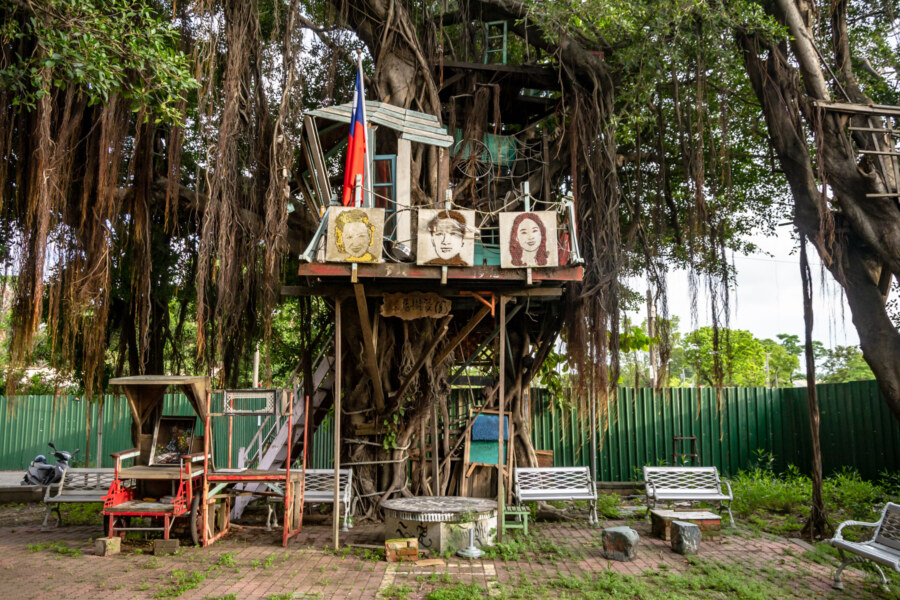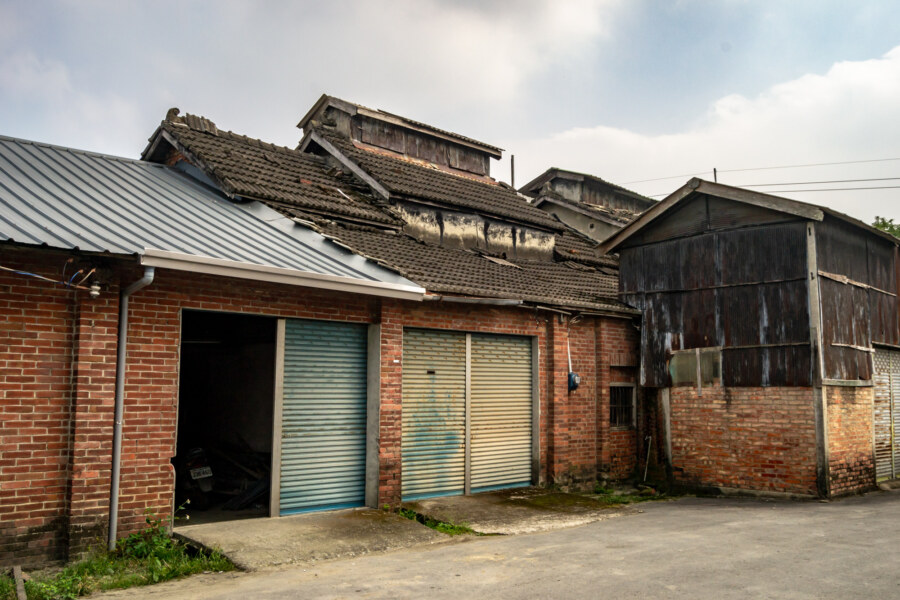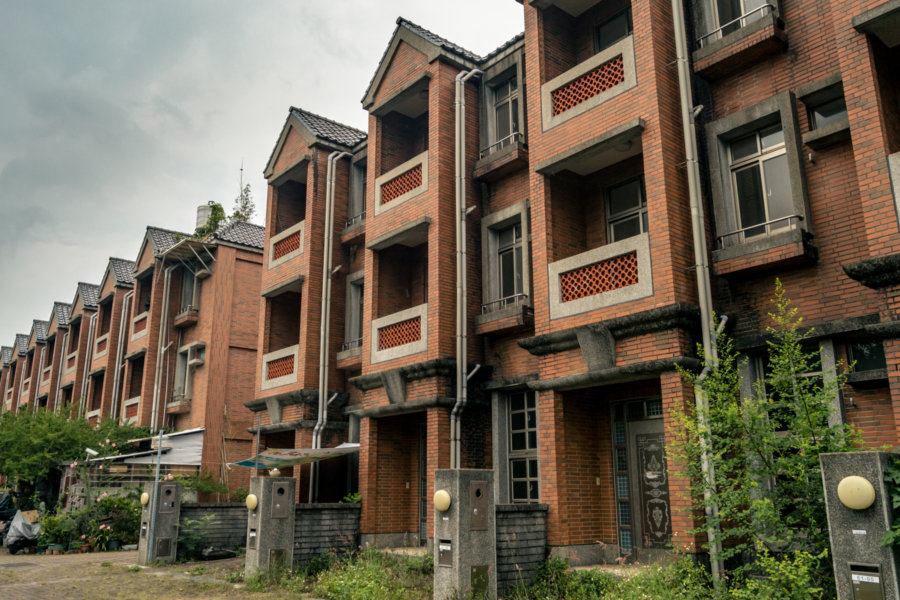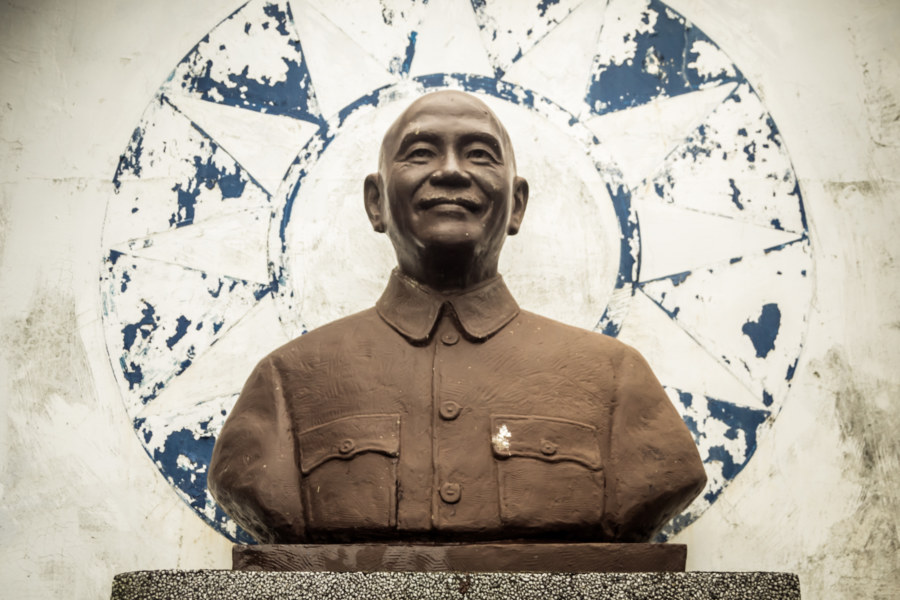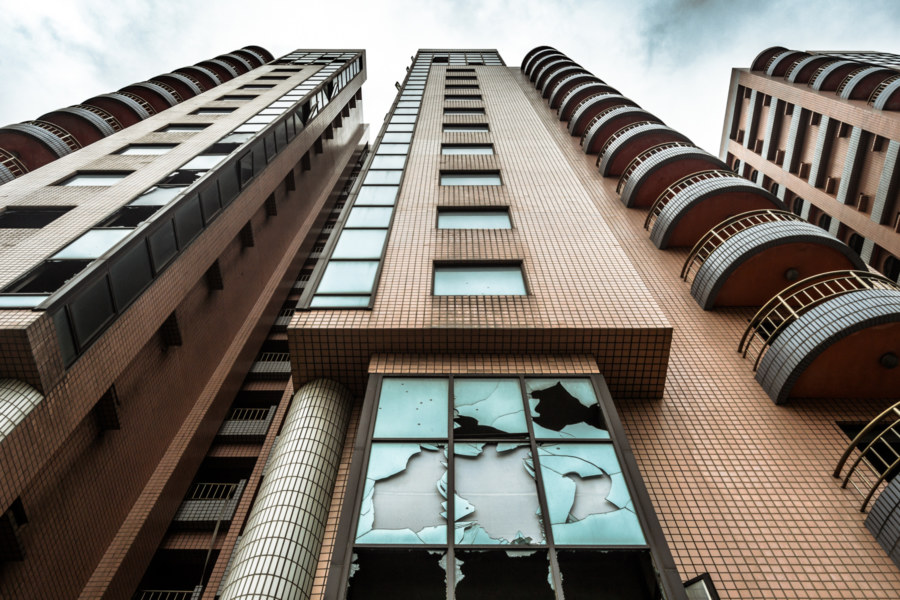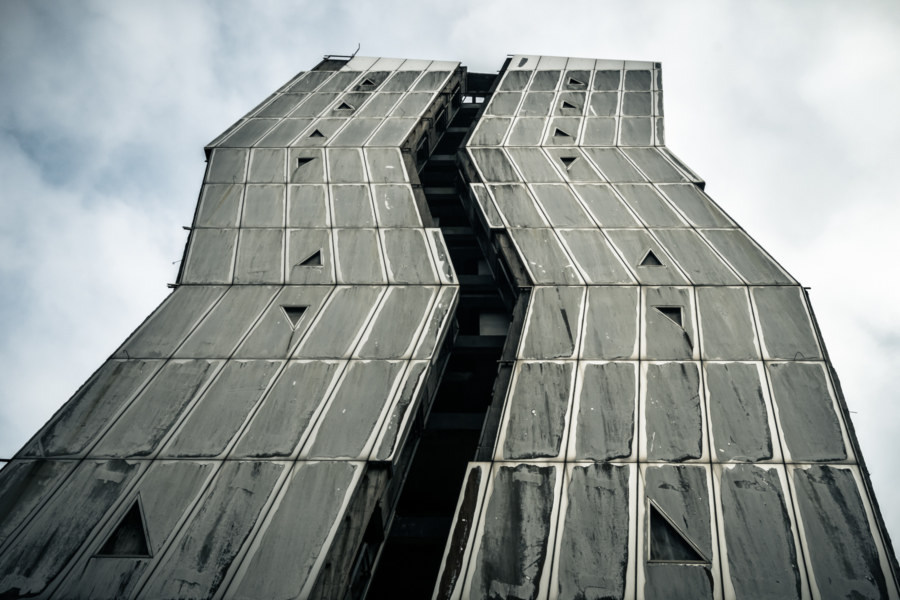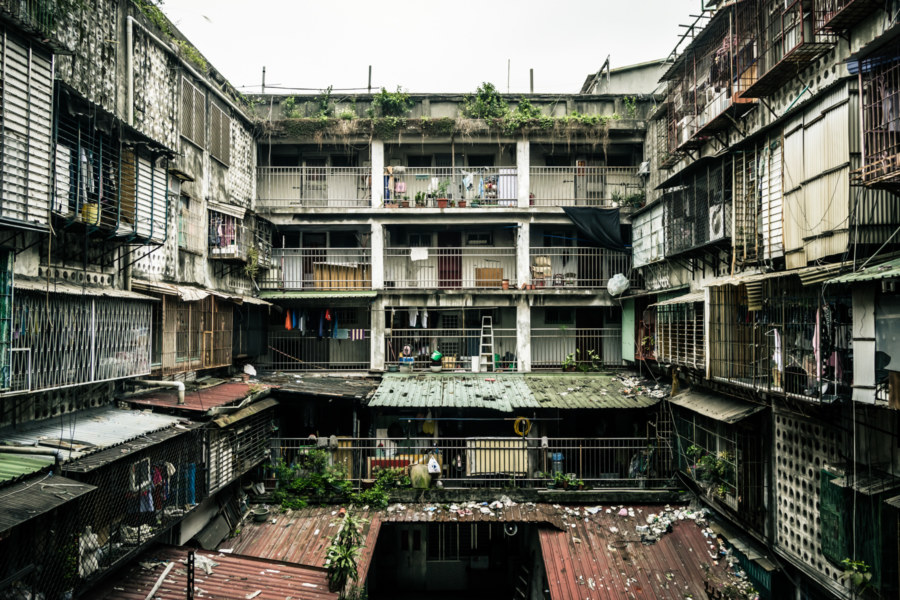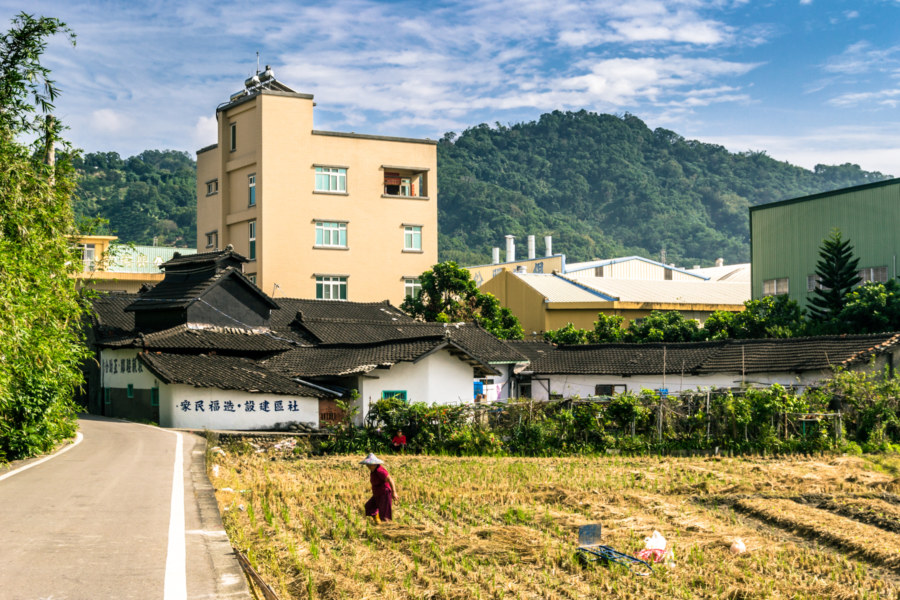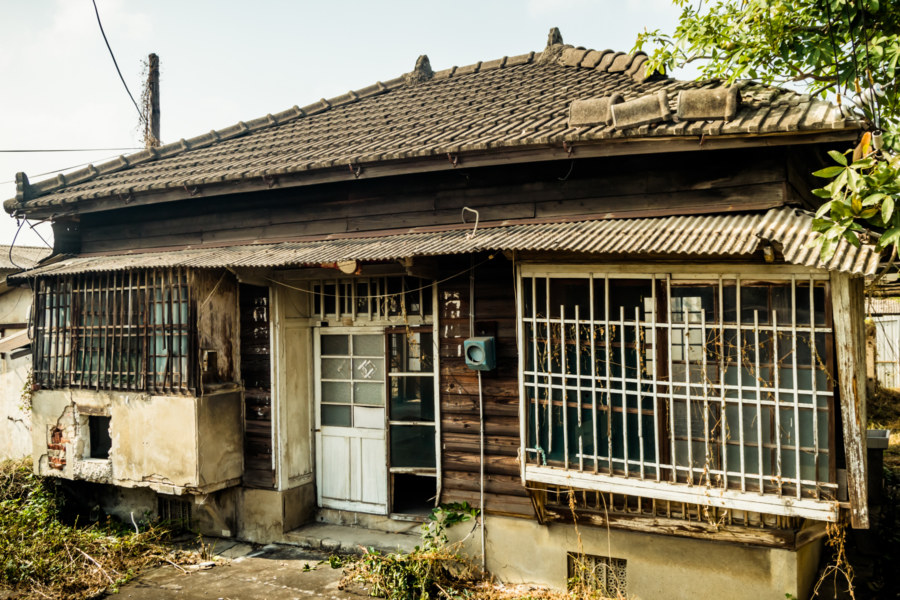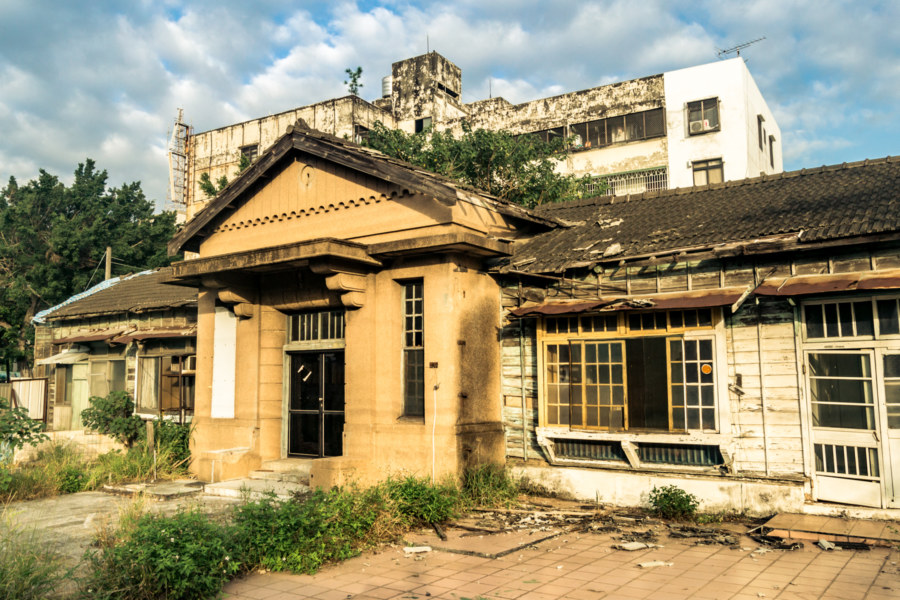The Second Air Force New Village (二空新村) is a former military dependents’ village in Tainan, Taiwan. It was established east of Tainan Airbase in 1950, primarily for members of the Republic of China Air Force and their families, and it eventually grew to become the sixth most populous of the official military villages in Taiwan. From 1950 into the 1960s several waves of construction and development increased the village to nearly 1,000 households, with a sizable number of unregistered structures scattered around the periphery. As with most other military villages this one was steadily dismantled and demolished over the course of many years in the late 2000s and early 2010s, part of a nationwide urban renewal program that relocated the remaining residents into more modern apartment blocks.
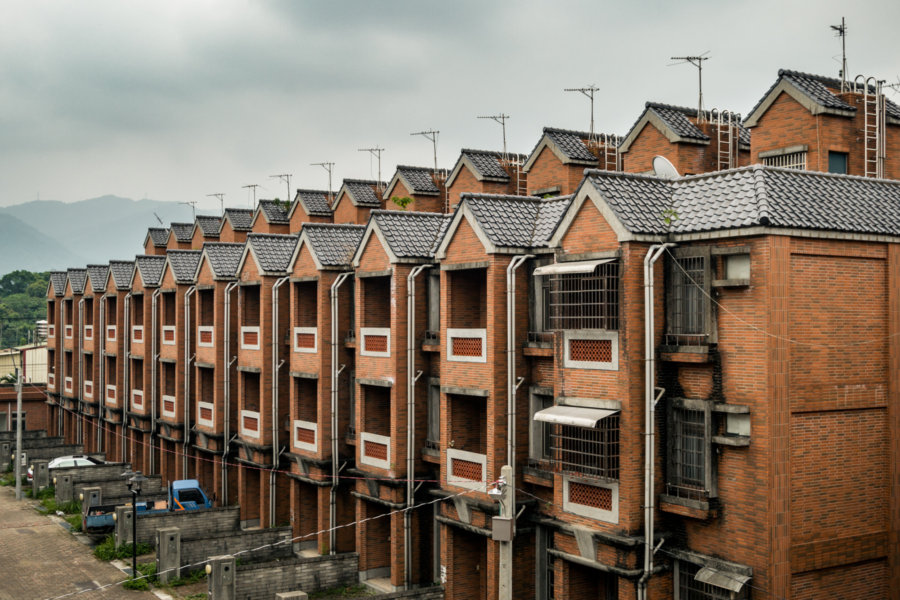
Where people are meant to reside. See also: commercial and industrial.
Adjacent Terms
Postcards From Linnei 林內明信片
Linnei is a small rural township located on the south side of the Zhuoshui River in northeastern Yunlin, Taiwan. Despite its strategic position on the Western Trunk Line this township remains mostly pastoral and undeveloped, with little industrial activity compared to neighboring Douliu, the administrative seat of the county. Population in the township peaked at nearly 23,000 in the 1970s and has been declining ever since, recently falling below 18,000 as rural flight continues apace. Nowadays the local economy mostly revolves around agricultural products such as rice, bamboo, and tea, but Linnei was once a major center of tobacco cultivation, traces of which can be found scattered across the countryside.
Kezikeng New Community 柯子坑新社區
Located on the outskirts of Zhushan, Kēzikēng New Community 柯子坑新社區 is one of several public housing projects constructed in the aftermath of the 921 Earthquake that devastated central Taiwan in 1999. Despite providing much-needed relief for those who lost their homes in the disaster there were few buyers—and today the complex remains mostly empty and disused. Built with government funds, this poorly-conceived housing project has become yet another example of what Taiwanese call mosquito halls, a term popularized by artist Yao Jui-chung 姚瑞中 and a team of student researchers known as Lost Society Document. Since 2010 they have published six volumes of Mirage, a series of works identifying more than 800 disused public properties all around the country. Some of their work was translated into English—which is how I found out about this particular locale, which I briefly visited in the summer of 2017.
Hsinchu Xinyi New Village 新竹信義新村
Pictured here is a bronze bust of generalissimo Chiang Kai-shek in front of the faded emblem of the Kuomintang (KMT) in Xìnyì New Village 信義新村, a military dependents’ village in Hsinchu City. Chiang and the KMT retreated to Taiwan with more than a million Chinese soldiers and their dependents in 1949, bolstering an existing population of seven million Taiwanese. This instantly created a massive housing crisis—all those people needed places to live! The new regime attempted to address this through the development of hundreds of military dependents’ villages, gated enclaves of KMT soldiers and their families, but those were chaotic, desperate, and uncertain times, and many more ended up in informal and often illegal settlements all around Taiwan.
Wanshou Road Residential Ruins 萬壽路廢棄社區
Taiwan is riddled with failed construction projects, monuments to avarice, incompetence, and bureaucracy. Building defects, mismanagement, and land ownership disputes are common causes, but legal battles, limited funding for costly demolitions, and a lack of political often ensure such projects remain a blight on the urban landscape of the nation. One such project can be found along Wànshòu Road 萬壽路 at the western margins of the Taipei Basin 台北盆地 not far from Huilong Station 迴龍站, terminus of the orange line of the Taipei MRT in Xinzhuang, New Taipei. Technically this abandonment is located within Guishan, for the district boundary sweeps down from the hills and loops around a mostly industrial area sprawling along a small valley leading the rest of the way to the flatlands of the basin. Given that this road is one of the main arteries connecting Taoyuan with Taipei these twin 17-storey towers, typically identified as the Wanshou Road Residential Ruins 萬壽路廢棄社區, are regularly the subject of inquiries on PTT and other parts of the Taiwanese internet.
Linkou Lightning Building 林口閃電大樓
Linkou Lightning Building (林口閃電大樓) is an infamous ruin not far from the newly-opened Taoyuan Airport MRT line in Linkou, recently named the fastest-growing district in New Taipei. Media reports often describe it as the Linkou Monster House (林口怪怪屋) and it regularly appears alongside the Longtan Monster House and other examples of the genre. While I wish there were a good story to go along with these photos it sounds as if it is simply a failed construction project where nobody wanted to cover the cost of demolition until recently.
Inside the Decaying Courtyard
The view from within a decaying public housing block in downtown Taipei.
Yesterday I followed a lead to Lánzhōu Public Housing (蘭州國宅), a KMT authoritarian era project in central Datong, Taipei. It is similar to Nanjichang Community (南機場社區), a far more well-known housing project in Wanhua, but this building was constructed almost ten years later in 1973. As with Nanjichang, its fate also remains unclear, as the city is working through complex land ownership issues to figure out how to move residents into more modern housing. I plan to have a full write-up about this place some day so I’ll leave it at that for now—just a glimpse.…
Liancun Tobacco Barn 鎌村菸樓
Liáncūn Tobacco Barn 鎌村菸樓 is a historic building on the agrarian outskirts of Fengyuan, Taichung, and one of the last of its kind. Back in the tobacco industry heyday of the 1950s there were more than 100 tobacco barns in this small agricultural community. Almost all the others have been torn down or fallen into grave disrepair over the years but this one remains in surprisingly good condition, a testament to the upkeep of the owners, who still live inside. I haven’t had any luck sourcing credible historic information about this place—it isn’t an officially designated heritage property nor a tourist attraction—but I’d hazard a guess that it is at least 70 years old. I would have asked the old lady in the courtyard but she didn’t seem all that interested in having a chat—though she warmly granted permission to shoot these photographs when asked.
Wuri Stationmaster Residence 烏日車站舊站長宿舍
The old stationmaster’s house in Wuri has been left to the elements for years. When will the city get serious about protecting its cultural heritage?
Today I breezed through southern Taichung on my way to the high-speed rail station and parts beyond. Along the way I made a brief stop in Wuri to follow up on a lead I uncovered while researching my much longer feature about the historic Japanese colonial era Wuri Police Station. Apart from the police station there are two other officially designated historic sites in the district (with nearby Jukuiju Mansion almost certain to become the fourth in the near future). One of these is the former Stationmaster Residence (站長宿舍) next to Wuri Station (烏日車站), pictured here. Despite its status as a heritage property the city has done nothing to restore it and little to maintain the old residence. About all they’ve done in recent years is put up metal fencing sturdy enough to prevent the intrusion of mildly curious explorers such…
Wuri Police Station 烏日警察官吏派出所
Wuri Police Station 烏日警察官吏派出所 is a historic Japanese colonial era building dating back to the early 1930s. Located in Wuri, Taichung, it was built in a simple, subdued style with more of a nod toward Rationalism than the localized Art Deco or Baroque Revival styles commonly seen in commercial and institutional architecture of Shōwa period Taiwan. After the station was decommissioned in the late 1960s it was used for residential purposes until it was ultimately abandoned for unknown reasons. Historic status was announced in 2004 and officially confirmed in 2013 but restoration efforts were stuck in the planning stages until 2020.
